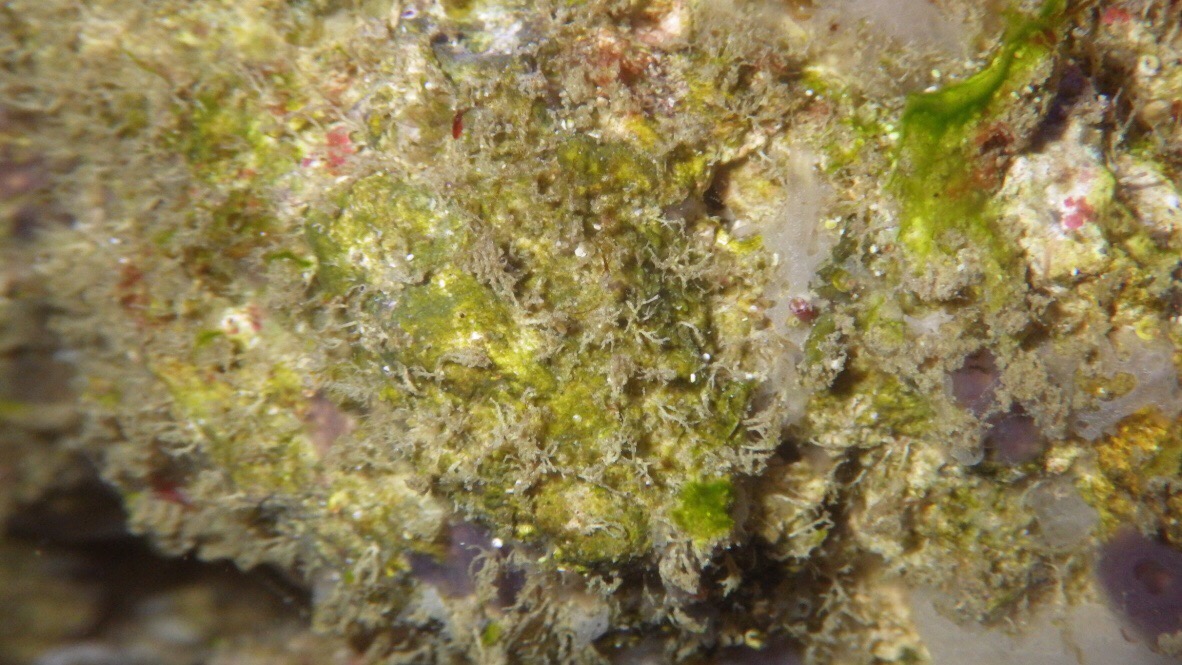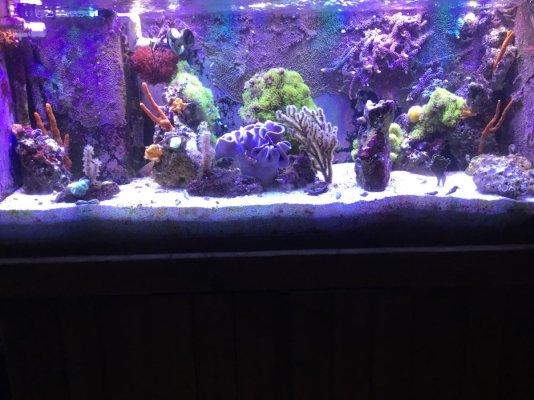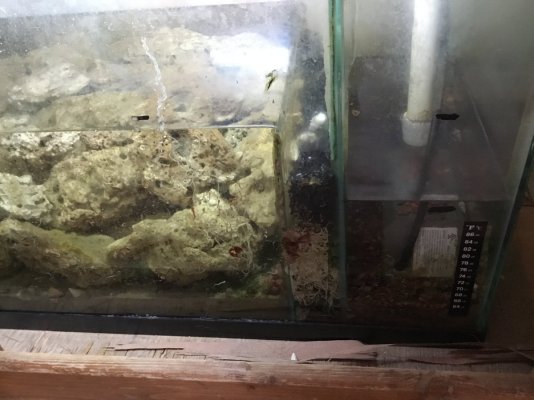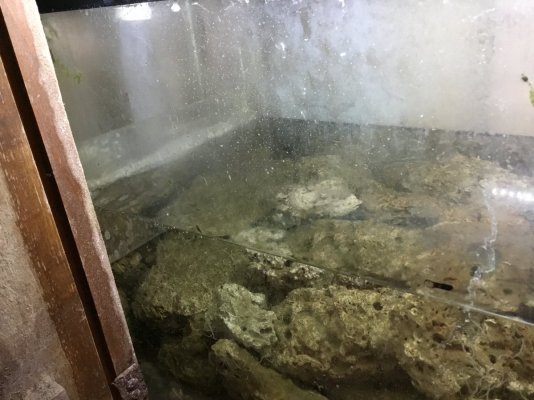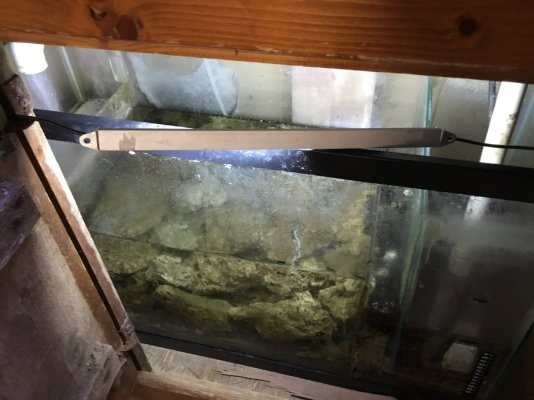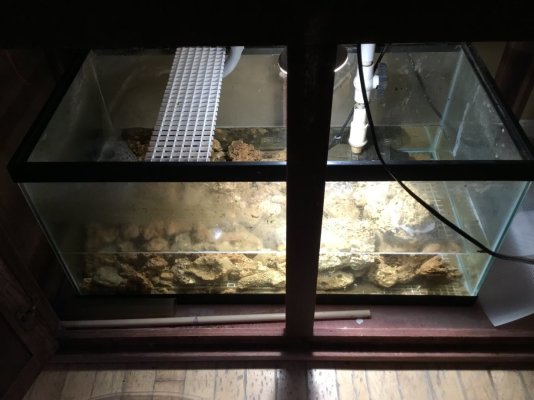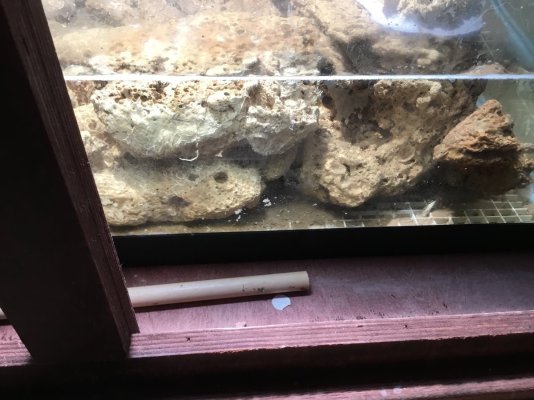Over the last 2 years, I have struggled to keep nitrates and phosphates over 0. Even with heavy feeding and reducing skimming, I struggle to keep both nutrients at proper levels. So much so that I just had a really bad cyano outbreak. Got it fixed with chemiclean and am dosing nitrates and phosphates now.
I have a 70 gallon display tank and a 20 gallon diy fuge where I previously grew chaeto. when I grew chaeto, it was a bare tank with a powerhead to keep the chaeto tumbling. Since I don't need to filter for phosphates, my thought it to create an environment conducive to a thriving pod population. The sump return pump's pipe currently branches off into the fuge and I control the flow with a gate valve. Then the fuge overflows back to the display tank. See below.
So my question is if my goal it to create a "refuge" environment where pods can flourish and make their way back to the display tank, what would be the best setup? My initial thoughts are to add sand, live rock, and a few plants with a basic light. Also, would I need some sort of clean-up crew as the fuge matures? Any thoughts or suggestions would be appreciated.
I have a 70 gallon display tank and a 20 gallon diy fuge where I previously grew chaeto. when I grew chaeto, it was a bare tank with a powerhead to keep the chaeto tumbling. Since I don't need to filter for phosphates, my thought it to create an environment conducive to a thriving pod population. The sump return pump's pipe currently branches off into the fuge and I control the flow with a gate valve. Then the fuge overflows back to the display tank. See below.
So my question is if my goal it to create a "refuge" environment where pods can flourish and make their way back to the display tank, what would be the best setup? My initial thoughts are to add sand, live rock, and a few plants with a basic light. Also, would I need some sort of clean-up crew as the fuge matures? Any thoughts or suggestions would be appreciated.
Last edited:



